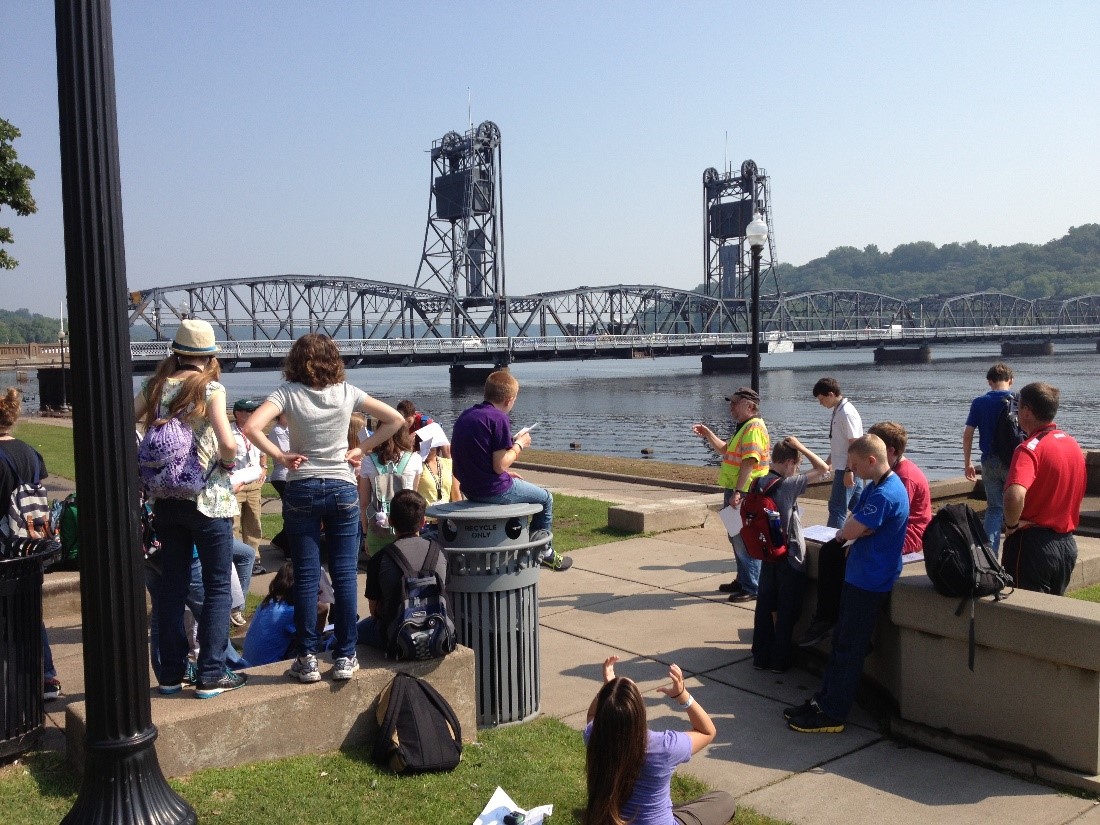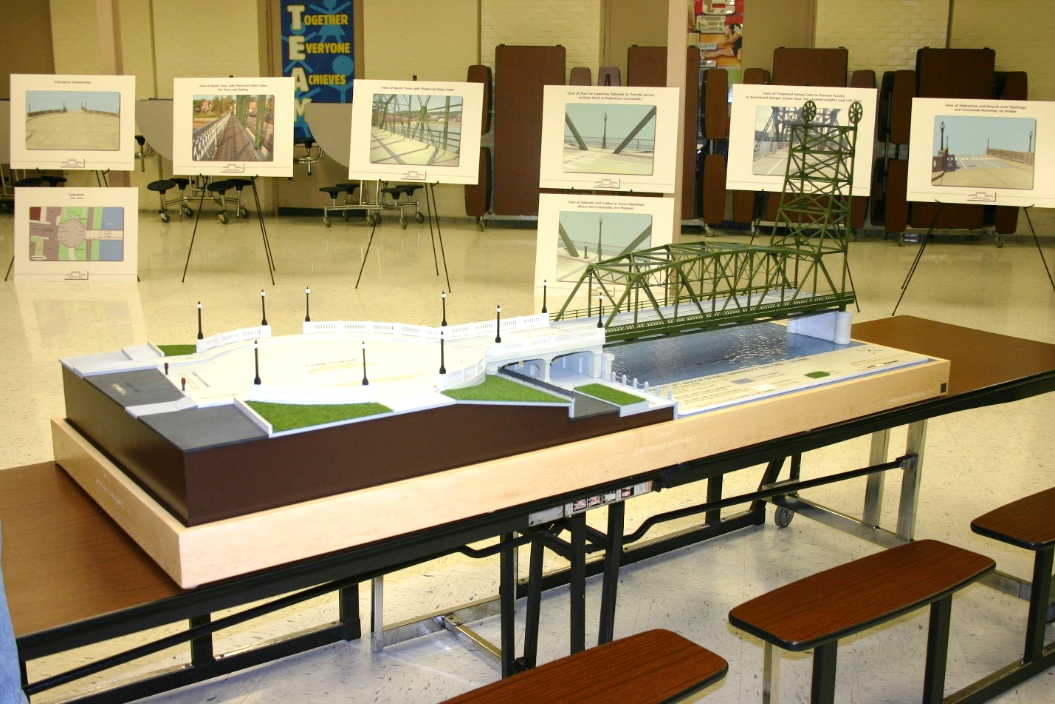SECTION 106 PARTICIPANTS: ROLES AND RESPONSIBILITIES
THE PUBLIC

Projects that involve historic bridges may interest members of the public. This photograph shows people gathered at the historic Stillwater Lift Bridge in Stillwater, Minnesota. Photograph courtesy of the Minnesota Department of Transportation.
The public has an important role in the Section 106 process. The Section 106 regulations state:
The views of the public are essential to informed Federal decision making in the Section 106 process. The agency official shall seek and consider the views of the public in a manner that reflects the nature and complexity of the undertaking and its effects on historic properties, the likely interest of the public in the effects on historic properties, confidentiality concerns of private individuals and businesses, and the relationship of the Federal involvement to the undertaking. (36 CFR Part 800.2(d))
Members of the public can have concerns about historic properties that may be affected by a project, regardless of the class of NEPA action, be it an Environmental Impact Statement (EIS), an Environmental Assessment (EA), or a Categorical Exclusion (CE). This means that even if there is no NEPA public involvement, such as for some projects processed as a CE, public involvement may be necessary under Section 106.
Members of the public who may wish to participate include:
- Owners of historic properties and individuals renting a historic property, which includes both residences and businesses. These properties may be within or adjacent to a project area.
- Individuals with an interest in historic buildings, historic bridges, archeological sites, or types of resources in a project area.
How and When to Involve the Public
Section 106 public involvement should take place during all steps in the Section 106 process, from initiating the process, identifying historic properties, assessing effects on historic properties, and also when FHWA works to identify measures to resolve adverse effects to historic properties.
One of the most effective ways to address the public involvement requirements of the Section 106 process is to integrate Section 106 public involvement with NEPA public involvement. NEPA public involvement occurs at multiple points during the preparation of EAs and EISs. It should be noted that even though there may be no public involvement associated with a project processed as a CE, there may still be the need for Section 106 public involvement if the proposed project may affect historic properties. In sum, Section 106 public involvement should begin during the early stages of project development and continue through the completion of the NEPA review process.

Models and photographs on display at a public involvement meeting for a historic bridge rehabilitation project in Minnesota. Photograph courtesy of Mead & Hunt.
In addition, approaches for engaging the public about Section 106 issues should utilize (and be integrated into) the same tools and approaches used for NEPA public involvement. These tools and approaches might include NEPA-related community engagement conducted in the context of Community Impact Assessments. This is especially important when the historic properties that may be affected by a project are associated with minority, low-income, and limited English proficiency communities.
Further resources on Section 106 public involvement:
- FHWA: Planning Public Involvement and Its Role in Project Development
- ACHP Citizens Guide to Section 106
For questions or feedback on this subject matter content, please contact David Clarke.

